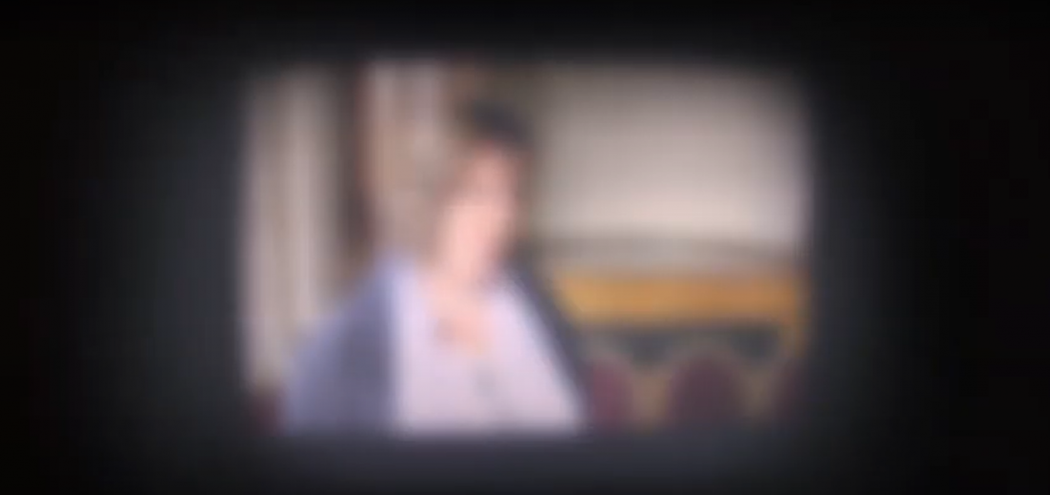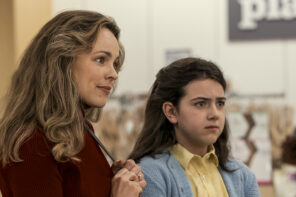This World Sight Day (8 October), Megan Mitchell of Matchbox Cine writes about the importance of audio description (AD) tracks for blind audience members, and why by not including them venues and distributors are potentially ignoring 2 million customers.
The pandemic has accelerated the provision of certain access measured by exhibitors for disabled audiences. There’s been a particularly notable increase and foregrounding of captions for D/deaf audiences, and although the exhibition sector as a whole still has a long way to go in offering captions, there has been an upswing in organisations committing to D/deaf access for a larger proportion of their screenings (online). However, audio description and access for blind audiences or those with sight loss remains shamefully neglected.
Although Matchbox Cine has been championing wider access to films via captioning, audio descriptions is still a bit of an unknown to us, and it would appear most exhibitors are in the same boat, so below is few handy resources and some basic information so we can all begin to make our film screening even more accessible to even more people.
What is audio description?
Audio description (AD) for films is an audio track which narrates key on-screen visuals so that blind audience members or those with sight loss can have the same information as audience members who can see the action on screen. And with over two million people in the UK living with sight loss there’s a massive audience who are missing out on experiencing films and attending screenings. Not to mention the legal duty to make services accessible to all people with disabilities, including visually impaired people, under the Equality Act 2010. The ICO’s resource for subtitling and AD gives a helpful overview of the provision.
You can listen to some examples of good audio descriptions here, which will help you understand what experience audiences using audio descriptions have, collated by the American Council of the Blind, here.
How do audiences use audio description at our event?
Most cinemas will have inbuilt equipment within their auditoriums which allows audiences to hear AD along with a film through cinema-provided headphones, meaning that the main hurdle for these venues is their willingness to acquire and provide AD (more about hunting AD files below!). However, if you’re a non-venue based exhibitor, working in pop-up locations, semi-permanent spaces or even outside there’s a few different approaches you can take, depending on your set-up and what films you’re screening.
If you’re screening more mainstream titles there are a few mobile apps which audiences can download and use during the screening, such as Earcatch which currently has AD for a small library of films, including The Queen’s Corgi and Dirty God. The Royal National Institute of Blind People has run trails of similar apps but the technology seems to still have some way to go to be widely available with enough film content.
It might be more straight forward to supply audience members with an audio description file directly to their mobile, either via downloadable links shared with audiences prior to the event or have devices such as branded tablets with the files already on them to give to audience members. This would have to be agreed to by the distributors if they have provided the files, but straight forward if you have produced them yourself.
As a lot of us are currently still existing solely online for the time being the best way, for anything, is to learn from others and share our emerging understanding of better online accessibility. I’d recommend checking out SQIFF’s festival, on now, and attending some of their events with AD.
How do you get your hands on an audio description file for a film?
Like many things, we’re still largely at the mercy of the studios and distributors when it comes to sourcing audio description files. Your first port of call should be whoever you’re licencing from – but if that comes up a dud there’s always alternatives.
As more exhibitors commit to making events accessible for all, there will be more accessible content being produced by exhibitors themselves so it’s worthwhile researching if anyone else has screened your title with AD. Hopefully, most organisations would be happy to share!
If it does come to your organisation having to produce AD, which may feel a little daunting, there’s plenty of organisations which provide AD creation services and can advise on costings and production timelines. Inclusive Cinema has a handy list of AD producers here!
Like all access provisions, thinking about AD at the earliest opportunity, and prioritising it, allows for access measures to be implemented, properly advertised and then used by audiences. Although the landscape of exhibition may look uncertain, funders have been keen to ensure access doesn’t suffer, especially inline with BFI’s Diversity Standards, so ensure appropriate budget lines (for AD, captions and anything else!) when planning.
—
More than ever before cinema, and the vast wealth of stories that independent exhibitors and cinemas give a home to, deserve to be for everyone. If exhibitors begin asking for and modelling the demand for AD, showing that as a sector we require accessible materials as standard, hopefully, we can pressure change and new landscape of truly accessible film screenings.





